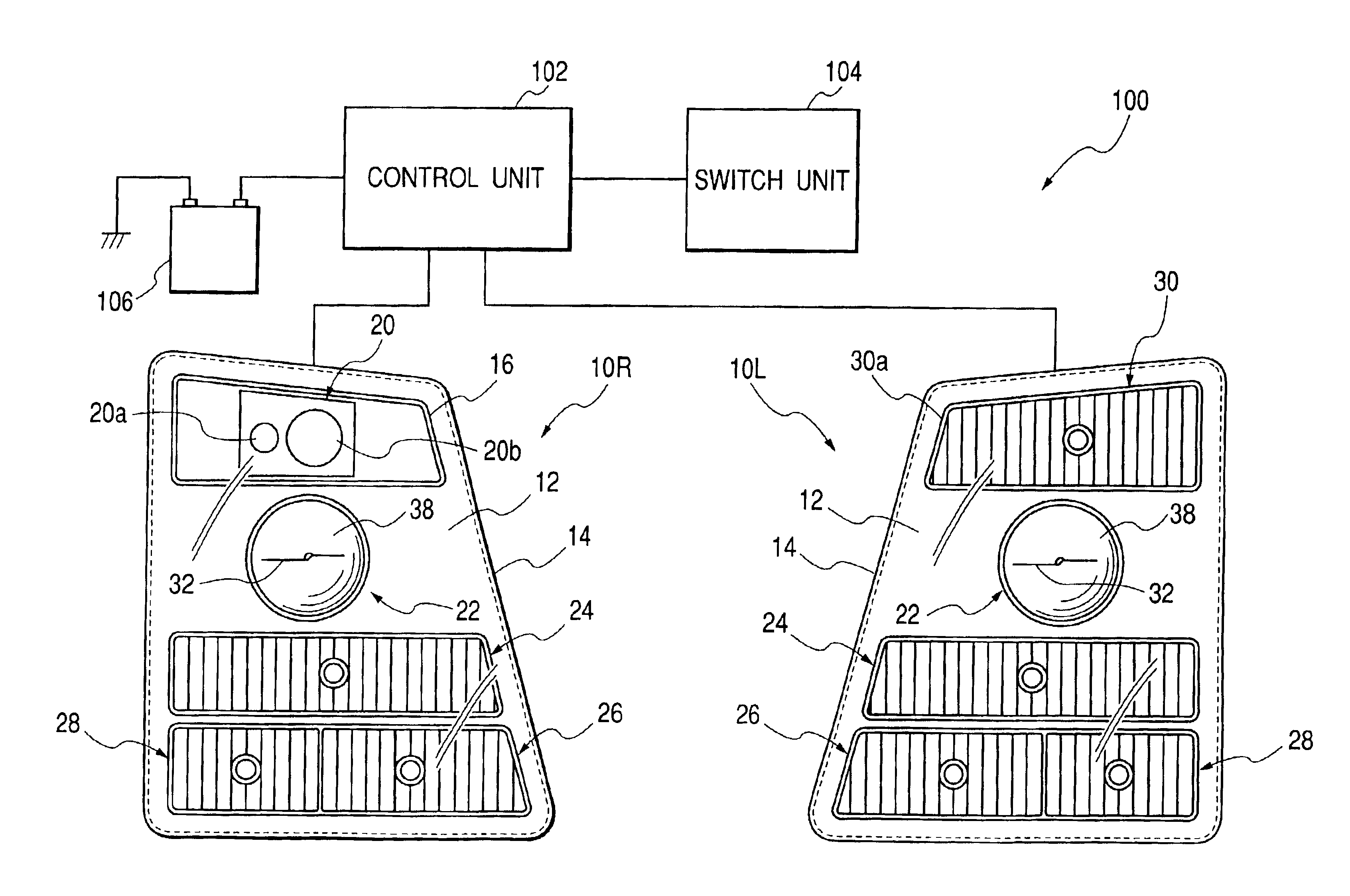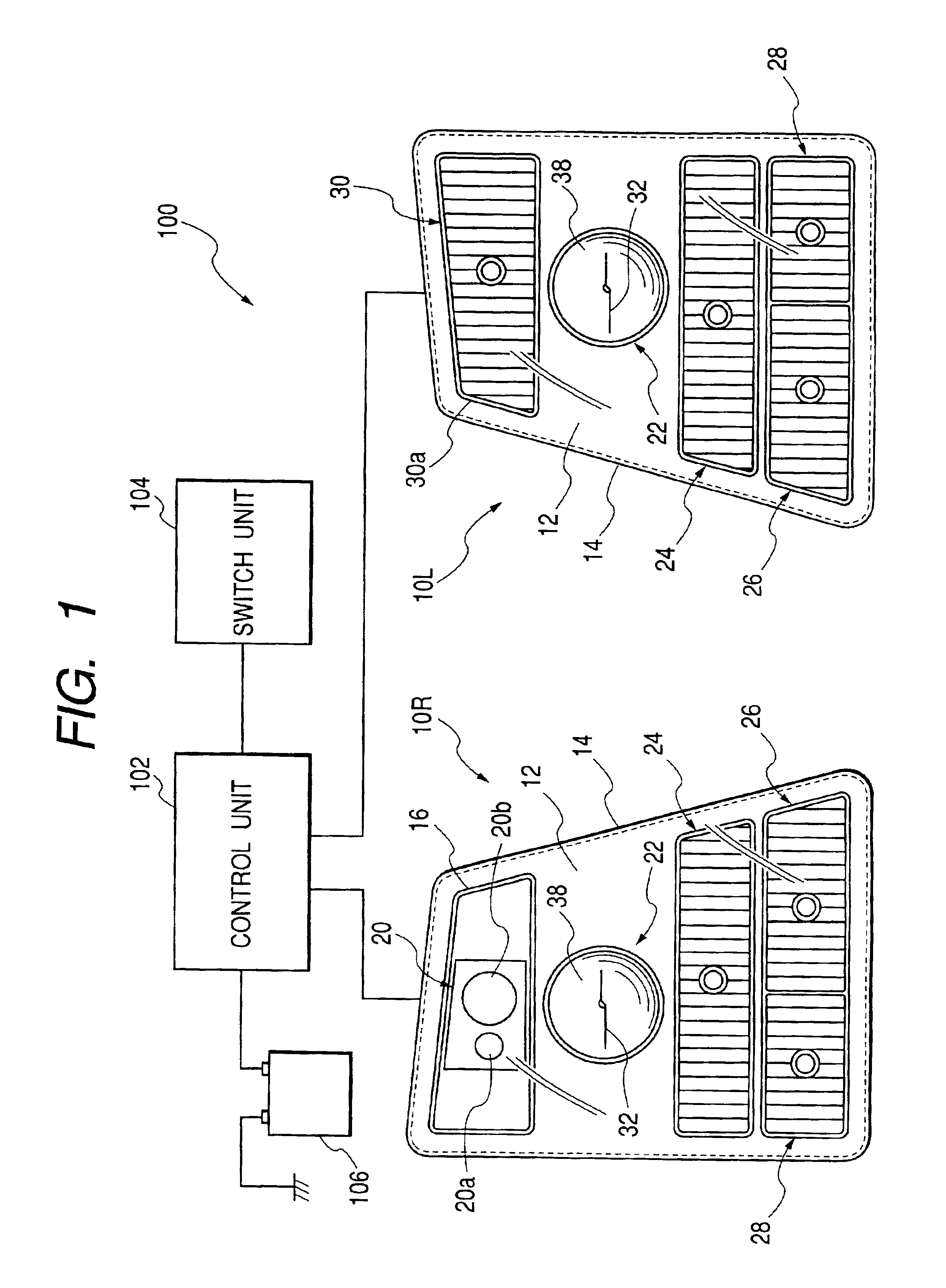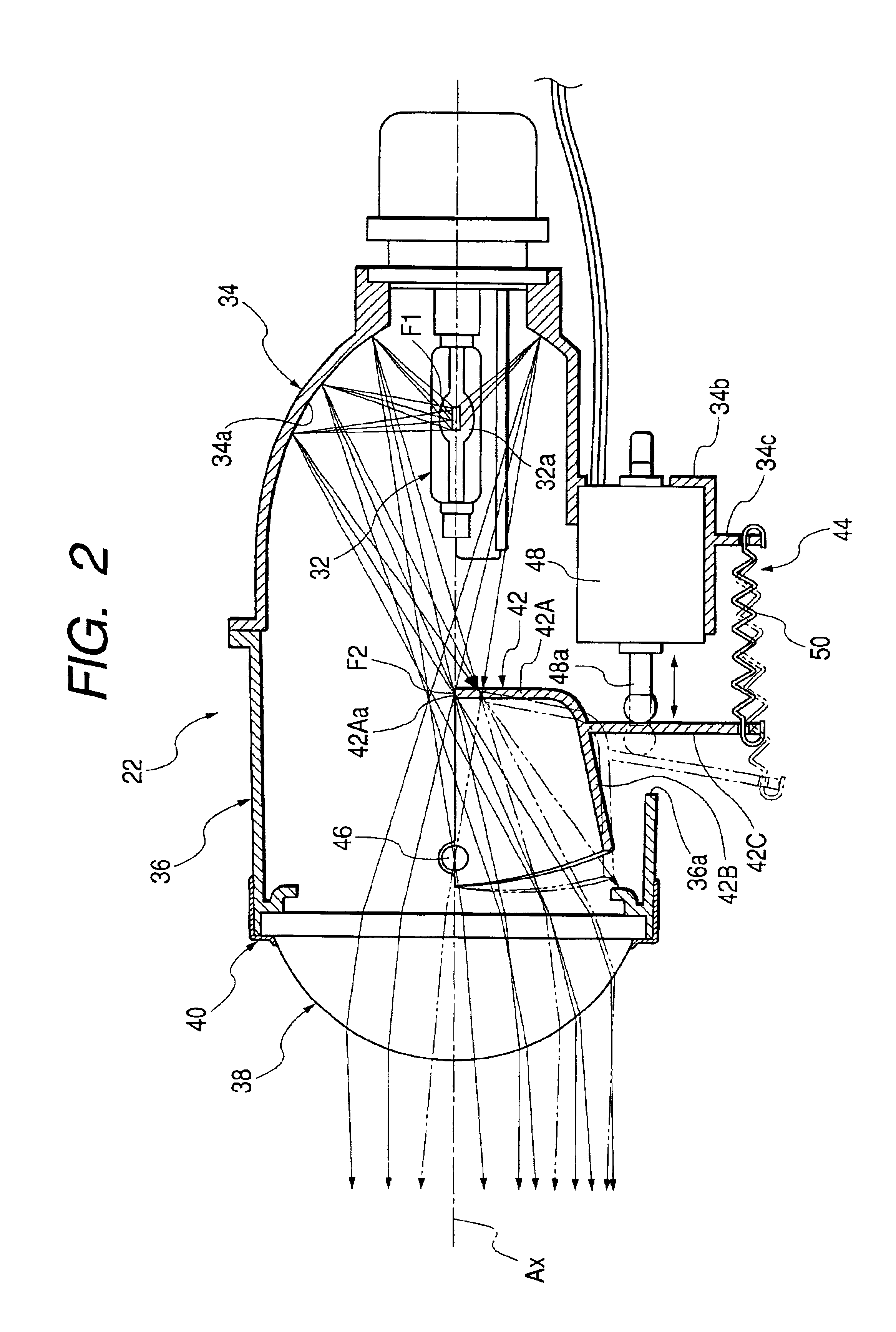Vehicle headlamp system
a headlamp system and vehicle technology, applied in vehicle headlamps, optical radiation measurement, lighting support devices, etc., can solve the problem of not being able to achieve beam emission with a luminous intensity distribution, and achieve the effect of increasing the travel safety of the vehicle and increasing the distan
- Summary
- Abstract
- Description
- Claims
- Application Information
AI Technical Summary
Benefits of technology
Problems solved by technology
Method used
Image
Examples
Embodiment Construction
[0024]An embodiment of the present invention will now be described with reference to the drawings.
[0025]FIG. 1 is an overall block diagram illustrating a vehicle headlamp system embodying the invention.
[0026]As shown in FIG. 1, a vehicle headlamp system 100 is provided to a large-sized vehicle such as a truck and comprises a pair of left- and right-side headlamps 10L and 10R disposed in the front end portion of a vehicle, a vehicle-to-vehicle distance sensor 20 (a vehicle-to-vehicle distance measuring means) incorporated in the right-side headlamp 10R, a control unit 102 (a variable luminous intensity control means) connected to the headlamps 10L and 10R, a switch unit 104 connected to the control unit 102, and a battery power supply 106 connected to the control unit 102.
[0027]In each of the headlamps 10L and 10R, a lamp unit 22 is formed of a headlamp body, various lamps and the like that are housed in a lamp chamber formed with a transparent cover 12 and a lamp body 14.
[0028]More ...
PUM
 Login to View More
Login to View More Abstract
Description
Claims
Application Information
 Login to View More
Login to View More - R&D
- Intellectual Property
- Life Sciences
- Materials
- Tech Scout
- Unparalleled Data Quality
- Higher Quality Content
- 60% Fewer Hallucinations
Browse by: Latest US Patents, China's latest patents, Technical Efficacy Thesaurus, Application Domain, Technology Topic, Popular Technical Reports.
© 2025 PatSnap. All rights reserved.Legal|Privacy policy|Modern Slavery Act Transparency Statement|Sitemap|About US| Contact US: help@patsnap.com



